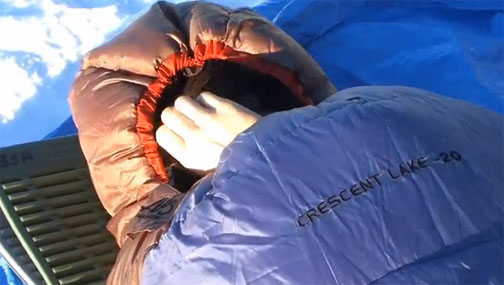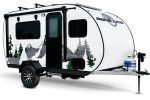Guide to Complete Winter Camping Equipment List
Going for winter camping – guide to make your own checklist of what to bring with you and what to definitely leave home...
It feels good to camp during the winter because of the added experience and excitement of being outdoors.
One of the essentials during camping is baggage that you would bring during the trip.
And to do it right – it is wise to start with the list of stuff you may need on your winter camping adventure.
Paper (computer in this case) will friendly accept your attempts to prepare the “list of essential items”, you may easily make changes, re-think each position, and optimize the “stuff” to make sure that your checklist includes:
a) all necessary items you may need during your winter camping adventure, and that
b) You are not bringing “too much stuff”, because this is one of these cases when too much is the bad choice!
All things should fit in your backpack with still some room to spare.
Gears for the Whole Group
You need to carry gears that can be used by the whole group camping with you. You can divide the equipments among each other for ease of carrying. The gear should include shovel(s), book guides, tents, pots and pans, maps and compasses, first aid kit, ground cloth, small stove with fuel, matches, and toilet paper. You can also add on some ski wax kit, repair kit, and sleds if you would like to bring them along with you. These are the primary essentials in your winter camping equipment list that will help you survive the coldest weather of the year.
Your first aid kit should have adhesive band aids, sterilized bandages, disposable gloves, gauze, antiseptic ointment, burn gel and some alcohol swabs.
May be it is a bit long, but each minute of this video is worth to watch to learn "Winter-Backpacking" from the best....
Winter Clothing
You need extra clothing because camping trip takes days. It is also the support that you will give to your body to keep its normal heat even if the temperature in your surroundings is below zero degrees Celsius. You need a few pairs of socks that could be made of wool or synthetic fibres. Do not use cotton because it absorbs perspiration like a sponge (takes long to dry) and will make you chilly. It also increases the tendency of hypothermia. Pack some sock liners to keep your feet dry and free from bacteria. And thick leggings to protect your legs from snow. Some insulated camp boots to keep your feet from freezing while stepping on snow and ice.
Wear long underwear made of nylon and some loose wool pants for ease of movement. And some wind pants to layer the wool pants. These two types of fabric absorb perspiration on the outermost layer of the fabric where it can evaporate easily giving you comfort and dryness. Keep your body insulated with layers of clothing that will fit comfortably over each other. You can simply rearrange them as you redress while you camp. Top all your clothes with a windbreaker to keep you warm. Windbreakers are easily removed in case you have to undress.
Bring extra mittens with glove liners to keep your hands from catching cold. Your head should be kept warm under an insulated hood and top it with a stocking hat. Couple everything with a scarf or neck gaiter for complete insulation.
Don’t forget to put extra pieces of these clothing to your winter camping equipment list and have some worn already to provide some space for other stuff. As for your shoes, use snow boots or outdoor shoes that are durable to resist the extreme weather. Waterproof shoes are better for winter trips.

Northern Tier Sleeping System.
Sleeping Equipments
Your sleeping bag should have a sleeping pad so you won’t sleep directly on the cold ground. The body tends to have a lower body temperature when a person is sleeping. An insulated pad is necessary to keep you off chills while you sleep.
Other Stuff
Your winter camping equipment list should include small items such as flashlights, batteries, sunglasses, sun block and lip balm, some insulated eating utensils, water bottle, candles, important toiletries (toothbrush, soap, etc.), bandanna and a pocket knife. These will come in handy in a number of ways. Also keep your phone fully charged before you leave the house. You can bring a power bank if you get you battery drained during the trip because there may be no access to electricity in remote areas.
Lastly, bring some food along with you. Pack some energy bars that are easily made, nutritious, delicious, and can last for three days when properly sealed. Be sure to have your winter camping equipment list complete with the foods that you need to last for days outdoors. Bring a small stove so you can easily cook an instant meal that you packed for the trip.
Before you leave the house, boil some water and store it in a thermal cup/tumbler so it will last for a few hours without freezing. As you cook your meal during the trip, boil some water too so you can replace the one kept in your pack.
.
About Us / Privacy Policy / Resources
Go to: Pop-up Travel Trailers and RVs


